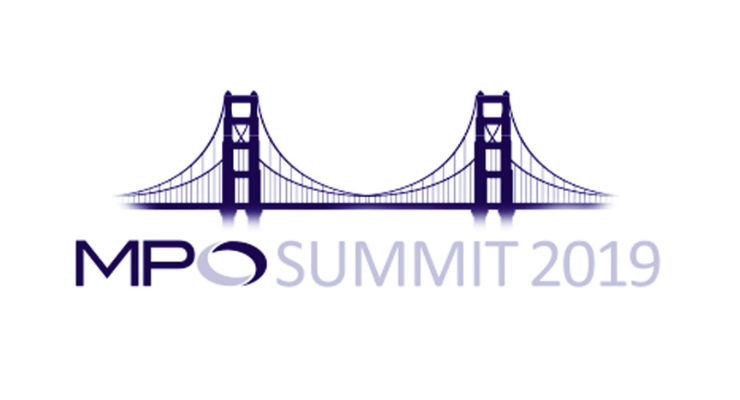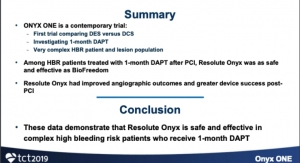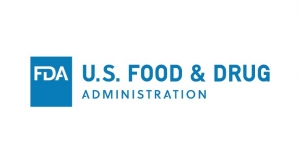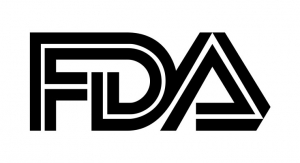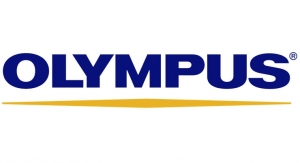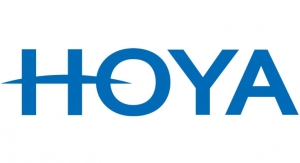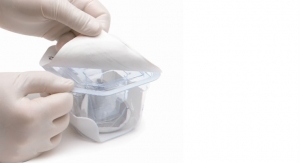Michael Barbella, Managing Editor10.03.19
State of the Industry (9 a.m.- 9:45 a.m.)
Speaker: Mark Leahey, president and CEO, Medical Device Manufacturers Association (MDMA)
Political landscape: Pundits say it's a two to three-person race right now. Vice President Joe Biden is one of the lead horses in the race right now, but Elizabeth Warren is picking up momentum. Polling data indicates Biden is probably the best candidate to go up against President Trump right now. We don't know how it's going to play out right now but it seems the wind is behind U.S. Senator Warren right now. Will be a toss-up as to who controls the U.S. Senate after 2020. The House of Representatives could be competitive in 2020 but it favors Democrats. U.S. Senate majority will be decided in a few key states - Alabama, Arizona, Colorado, Maine.From a macro perspective, the political winds seem to be at the backs of Democrats right now. This is interesting times, trying to predict what is going to happen. If anyone says they know, they are lying. When we look at healthcare, that issue is at the top of the charts in terms of what voters care about. Increasing drug costs is very concerning to the public - the top issue, followed by maintaining ACA's pre-existing conditions (protections), and lowering healthcare costs (out of pocket for consumers).
Healthcare, immigration, Republicans, and social issues were the top issues in the first three Democratic presidential candidate debates. Criminal justice, jobs, education, and the military were the bottom four issues. Healthcare will continue to be the top issue in the debates.
Gridlock in Congress - There are few opportunities for bipartisanship in deeply divided Congress. If you disagree with someone, I'm right, you're wrong. That's not what the Republic was founded on but it's made it hard to get anything done. There is a growing concern that impeachment may doom opportunities to pass major legislation. Do we want to give one political party a win over another or do we want to maintain political gridlock? Heard some chatter on the Hill yesterday, there is some interest in getting the USMCA done by the end of the year. Beyond that, trying to get reasonable laws on the books, seem to be falling in the rear view mirror now. Betting that nothing gets done is the safer bet than something gets done. There is bipartisan interest to address out of pocket healthcare costs with drug pricing and surprise billing. Pelosi and Trump are aligned on drug pricing and there has been a lot of energy surrounding surprise billing.
Federal government is funded through Nov. 21 but there is potential for another mini-shutdown as the year comes to a close. If House votes on impeachment by Thanksgiving, it goes to the U.S. Senate and the Senate has to take up the issue, meaning that other legislative items would be put on hold until the impeachment issue is resolved.
Device tax repeal/suspension: House bill to repeal the tax, H.R. 2207, has 248 co-sponsors (61 Dems). Strong support with key Democratic voices in Congress. There's a real concern here that we can find ourselves in a place where the tax will be back in effect. This is an issue with large bipartisan support to address, but at the end of the day we need a vehicle, because it's not going to stand alone on is own. Likeliest resolution is continued extension as part of larger package - Budget caps/debt limit deals sets up end-year deal; there is bipartisan interest in tax extenders and ACA taxes; and large House "Cadillac tax" vote dynamics. Senate has not taken up Cadillac tax issue yet. Impeachment dynamic is something no one knows - will it be something that both sides want to address or will it become a quagmire?
FDA - Dramtically improved for medical technology over the past decade. There is more collaboration between industry and FDA, I'm still fielding calls about the FDA but a lot less than I was 10 years ago. When regulators, policy makers get a chance to talk and work together, good things happen. More products are launching first in the U.S. and that trend is likely to continue with changes to the EU. Digital health, 3D printing, AI are areas that require FDA to explore new regulatory models.
Bleeding Edge, ICIA documentary - claimed patients are being harmed because of the emphasis on profits over patients. That is completely bunk - they look at half a dozen examples over a number of years, and they fail to look at the whole picture. Frustrating for all of us. CDRH Director Jeff Shuren has said the number of examples some of these folks are talking about is grossly misrepresented.
Ethylene oxide issues - started last fall with the WIllowbrook facility in Illinois, have a situation going on in GA as well. We are waiting for the EPA to put out proposed rule on sterilization - that's a great interest to folks. FDA is involved here, have been working with our members to help companies find alternative sterilization sites. Challenging situation out there. Lower levels of EtO, this issue is not going anywhere, our hope is that some of the issues raised from the folks in these communities are balanced with need to sterilize products. If too many of these facilities go off-line what would that mean to patients?
There are so many things going on here, you just have no idea where the administration wants to go. The U.S.-Japan agreement was important. Have some companies whose components are only made in China and we're trying to highlight the acute impact of these policies. All these issues directly impact patients.
Succeeding Globally in Medtech (9:45 a.m.- 10:30 a.m.)
Speakers: Florence Joffroy-Black, CEO, president and founder, MedWorld Advisors; Dave Sheppard, principal and founder, MedWorld Advisors
At the end of the day working in medtech, being global is something you have to do. Everybody's view of the world is different.Sheppard: There are so many things that can impact the global environment, some which are beyond your control. What we learned early on is to control the things you can control because you can't always impact what happens in Washington or in Brussels. You should really have a plan and be flexible to that plan. You have to be able to adjust - don't make radical adjustments every day but pay attention and evolve along with the plan. Should also be respectful to global stakeholders. Give everybody the opportunity to work with you and help you - just because they have a different style than you doesn't mean they can't help you and be successful. Communication is key - cultural differences is not just different countries, but cultures within companies themselves (relative to how one company behaves vs. the other). Have to have a bit of humor and enjoy the experience.
Joffroy-Black: World's major medtech headquarters are concentrated in specific countries and regions - Germany, Japan, Northern California, Southern California, Massachusetts, Minnesota, etc. U.S. has 56, China - 1, Japan - 12.
Global dynamics are very important, as there are some fundamental shifts going on. There is fast-paced consolidation, new players coming into the world (not necessarily in medtech industry, some from the outside), disruption of traditional value chains (global population is growing daily, changing the way we conduct business); low costs and value is important, innovations and therapies are very different today than it was a decade or two ago.
Sheppard: Think about exit strategy. U.S. is one of the more segmented markets in the world while Canada has a government-run healthcare system. Latin America - can't have one marketing plan, have to understand and forge a plan for individual countries. China has 26 different provinces and every province requires a registration, regulatory process can be tough (might be successful in one province but not be able to sell a product in another). Japan is very unique - very successful country but has its own system of rules, and you have to really understand what those rules are. Japan is dealing with a shrinking workforce to pay for healthcare for a growing aging population. South Korea - it's a drinking culture. Expect you (in building relationship) to go out for drinks (three rounds of drinking). Russia is a very unique environment - lot of power players in government; you have to know who you're working with. I've been in Russian hospitals and I've been impressed with the level of care in those hospitals. Technology was second to none, so they know how to put the money in the right places. Europe is similar to Latin America - EU is 28 countries and every country is unique. Your CE Mark gives you the price of admission, but you have to have one plan to get into Britian, another to get into France (sometimes colors make a difference). Australia is an up and comer in terms of market opportunities. If not working there already you might want to think about it - the country is on the right track. Middle East has always been a good place to launch, that area is looking for new products to launch. Africa is complicated.
Operational excellence - What is your plan? Six sigma can be very helpful if you understand how it works and how it needs to be implemented. Lean has been strong coming out of Japan.
Global execution of supply chain - last two years has been some of the most challenging times with the things going on with tariffs. Unpredictable area over the last two years. Key point around supply chain - it has to be efficient in order to save money. Sustainability is becoming more important now than it was 10 years ago, many organizations are developing metrics around sustainability.
Regulatory strategies - Some of the key things we've learned over the years is you have important decisions to make regarding what you claim vs. capability vs. future use. Setting up reimbursement is also fundamental - if you have approval, reimbursement is essential. In Europe, reimbursement varies by country, while in U.S. it varies by insurance carrier (Cigna may differ in rates depending on the geographical area).
Innovation - I've seen it executed brilliantly and I've seen some companies struggle with it. When you're a technology in search of a solution, there will be problems trying to develop and market the innovation. Thus, it's important to start with a clinical unmet need and involve all stakeholders.
Situational intelligence - Very important for being successful. If someone wants to tell you about themselves just listen, because you'll gain a lot of insight. Don't say I already know about you.
Execution - Everything is a negotiation, so treat everyone with respect and listen carefully. Avoid saying no (Japan); structured in approach and polite (German); very direct and aggressive (Israel); aggressive within boundaries, most of the time (American); aggressive with no boundaries, says yes to everything most of the time (Chinese); debates, more relational in approach but not in a rush (French); conservative and polite while still direct (Nordic); noisy, loud, aggressive (India).
Optimizing Supply Chains in the Medtech Industry (11:15 a.m.- 12:15 p.m.)
Moderator: Bill Ellerkamp, president, Precision Coating
Panelists:
- Carlos Ayala, director of Strategic Procurement, Integer Holdings Corp.
- Todd McCaslin, Global Sourcing director, Boston Scientific Corporation
- Christopher Oleksy, co-founder/CEO, Next Life Medical and CEO, Emergent Respiratory
- Julie Schulte, MBA, co-founder and CEO, Chamfr
- Daniel Stemm, vice president of Global Key Account Excellence and Government Affairs, Heraeus Medical Components
McCaslin: I have a very simple job: to ensure we have the right suppliers working with us to have innovative products with high value, low cost, etc. Supply disruption is one of the key concerns. Under the umbrella of risk, I worry about M&A activity. We've acquired lots of companies in the last 18 months, and that brings in lots of risk. When a tier 2 or tier 3 supplier has a problem (cannot get a certain material, for example), that is worrisome too.
Ayala: Everyone is looking at optimizing the supply chain and reducing costs. Pressure not only from OEMs but the healthcare industry in general. OEMs are trying to consolidate, sometimes reduce footprint, and we have to do the same. In 12 years, Integer is a changed company. Try to increase capabilities, efficiencies through economies of scale; any change in supply chain is a potential risk. How to deal with that? Supply chain management.
Stemm: Heraeus Medical Components has only been around for about 10 years. What is happening to us - what is keeping Todd up at night, his strategic competitors are coming to Heraeus and we are getting a list from our customers telling us who to buy from in their supply chains.
Ellerkamp: Industry is experiencing a lot of consolidation. In some cases, seeing OEMs outsourcing 40-50 percent of development. Scale really matters in that context. The rise of electronic manufacturing service providers has come to pass in the last decade. There are new entrants to the industry because the scale you have to deal with is changing so much. Seems like where we are going is toward a tier structure in the industry. It's new to many manufacturers in medtech; how does Integer maintain visibility that mom and pops have had to the OEMs?
Ayala: I think we are trending toward a more tiered system. OEMs are looking for trusted partners to help them with supply chain management. We can absorb pressure from OEMs by working with trusted partners downstream. When we acquire a lot of companies, you acquire capacity, new capabilities, but also a fragmented supply chain and that can be costly. We do the same as OEMs - looking for partners to help us manage the chain. Focus on critical suppliers first; we can't work directly with all suppliers so we have to focus on the most critical ones. Develop long-term relationships. As you go deeper in the supply chain, it's more difficult to do that because it's more fragmented. But you have to look into the second and third tiers to establish that communication. Challenge for leaders in the supply chain. Communication, long-term partnership are key. In medical device industry, any change takes time so it can be difficult for new players looking for business. Every company has to find the right balance, but I believe there is a place for most companies in the medical device industry.
Schulte: Part of the reason there hasn't been a huge migration has to do with pricing issues. People have to reduce resources, cost, cannot streamline processes, flow, infrastructure. So there is this conflict - how to evolve, streamline the supply chain and still effectively serve the OEMs? Speed is time is money. Globalization allows people to meet anytime. Smaller companies need to move fast to survive.
Oleksy: One of the things I've been watching - the last thing I would ever want to see happen is the larger workflow structures put on the smaller suppliers. The reason smaller suppliers are successful is because they are not overburdened. The way to allow the smaller players to be engaged is to have good sourcing teams to work with them. Regardless of size, when was the last time an OEM came to you and said I'm going to put you under a freight contract? The OEMs coming downstream and helping the smaller companies with freight contracts, etc., without consolidation. We can help each other without necessarily having you give up your company completely.
McCaslin: Boston Scientific is looking at working with some of our companies to do dual component contracts. There is no strategy to stay away from small suppliers. Thinking like a big company is important to success.
Schulte: Give them visibility early in the process. I was taught to fear private equity but my experience has been very positive. When Vention was building its team and acquiring companies, private equity helped with that. PE provides an opportunity to grow, to scale, tend to be a little less risk averse. Found PE to be a very necessary and good partner.
Stemm: We have a slightly different perspective on PE. Any time PE moves in and picks up a smaller supplier, the OEM will reach out to Heraeus and say what else in this segment is at risk? Are you going to buy something, because if you buy something you buy it as an investment for the business.
Ellerkamp: Cost part of the equation is important. Smaller players are backing away from investment in human capital and infrastructure that OEMs expect. I have seen PE step into space and provide capital to invest in engineering staff, technology, etc. It's allowing the industry to get to some of that cost hanging out there. I believe outsourcing improves end to end cost structure of the industry but is there a point at which we reach the end point of the horizon where it becomes a zero sum game? When do we get to that point? How does scale impact this?
Oleksy: Something has to give. There's a real mathematics issue here that is stressing the middle of that care chain, and that's coming home to roost with me. General OEM community is putting pressure on. Most OEMs can't reduce by 3 percent yet they expect 5 or 6 percent reductions downstream.
McCaslin: On the cost side, we have never asked supplier to do better than we do internally with our plants. I don't ask anyone externally to do more than we do internally.
Stemm: Misalignment of objectives to the industry is still a major barrier in reducing costs. This bogs down executives' ability to best understand or position suppliers. If want to go after cost, have to do it on an apples to apples basis. Use the word strategic properly.
Oleksy: When a payer tells OEMs what they are going to reimburse, somebody's got to give. They can set reimbursement levels...we don't give that whole area enough scrutiny, and it puts pressure on everybody else.
Ayala: We are looking at price erosion, and there's only so much you can stretch the rope before it breaks. At the end it's the cost reduction for the company.
Schulte: Taking a digital approach can streamline costs and increase efficiencies.
Oleksy: Digitization segues into the talent proposition. Lot of people have a hard time finding supply chain talent for their own organizations.
Talking Trade: Recent Trade Actions and U.S. Medtech Supply Chains (1:45 p.m.- 2:30 p.m.)
Speaker: Mihir Torsekar, international trade analyst, U.S. International Trade Commission
Globalization and medtech supply chains: Associated with greater investment in countries with low labor costs, strong financial incentives (FDI incentives, tax reductions), preferential trading relationships, proxmity to large markets. That resulted in expansion of medtech trade. Trade in medtech parts grew 337 percent between 1998 and 2008. Investments led to medtech clusters. Five notable clusters: Ireland, Mexico, Costa Rica, Malaysia, China; these clusters are major U.S. suppliers - nearly half of U.S. medtech imports come from these countries. There is a sizable amount of trade occurring with these clusters. Takeaways: 1.) Each cluster is expert-oriented and U.S. is the largest single-country recipient of medtech from these countries, and 2.) growing medtech services agreements suggest advancing global value chain positions for some.Changes in medtech supply chains post-recession: The rate of growth in medtech trade has slowed; technology is reshaping global supply chains, low labor costs is driving investment decisions.
Developing countries are now becoming major consumers of medtech and may be using it for their own markets. Asia-Pacific is expected to be the second-largest medtech market by 2020. U.S. is still expected to be first. Asia-Pacific is becoming a key trading partner with the U.S.; closing in on the European Union. The EU is being seen more and more as a difficult market to navigate; tough to get CE marks, uncertainty over MDR, Brexit. Chinese medtech companies have dramatically increased revenues, and are supplying both the domestic and international markets. Imaging, IVD, high-value consumables are the top three areas for products from China.
Technology is reshaping supply chains. Pricing pressures, strict regulations, operational inefficiencies create a demand for tech-based solutions. The IoT, 3D printing, automation, AI, impact the entire supply chain. Takeaways: High need to demonstrate value of devices amid cost containment pressures. Shifting from product-based model to a value-based system driven by software-centric solutions. Low labor costs are less of a concern when making investment decisions. Proximity to market, automation, skilled workforce are key. Automation reduces the need for a low-cost labor force.
U.S.-China trade dispute: Stated reason for tariffs - Section 301 investigation into China's unfair intellectual property practices. Made in China 2025 industries include high-end medical technologies. Back in 2015, China initiated an ambitious policy called Made in China 2025 (10 sectors focusing on better domestic production, medtech was one of them). China is focusing largely on imaging equipment, medical robots, disposables, among others. About 25 percent of what we impact from China is affected by these tariffs. China has imposed retaliatory tariffs and that has focused on imaging equipment as well. Effects - overall, roughly one-third of U.S. imports from China are from their foreign affiliates operating in China. MITA estimates imaging companies will lose $138 million a year. Parts is tied for the largest share of medical imports from China (27 percent). What does this mean? Have led to greater regional investments in Malaysia, Singapore, Vietnam, Thailand. What is driving these investments? Competitive production costs, favorable government policies, English-speaking workforces. Evidence suggests there is some diversification of suppliers towards other regional players and away from China, but China still remains a very attractive market.
Perfect Storm: Addressing the Changing Face of Regulations in the U.S. and Globally (2:30 p.m.- 3:15 p.m.)
Speaker: Dawn Norman, MS, MRC-X LLC
Is it a medical device is not a silly question anymore. The answer varies depending on country; one size does not fit all. In one country it could be a medical device, in another, it's not.Are there unregulated countries? Yes, but it's complicated.
What is the easiest/fastest market to launch a medicla device? Fifteen to 20 years ago it was definitely Europe. But the future is unknown due to up-classifications...used to go to Europe early because it was the easiest to get into but there are increased costs (audits, clinical data, certification).
ISO 13485:2016 compliance required in March 2019
MDSAP compliance for Canada in January 2019
MDR compliance dates and MDD certificate expiration - Class i, compliance required by May 26, 2020. Class Ir (reusable) required by May 26, 2020 (there are rumors that this may be pushed back - a four-year extension, but we don't know. Work through this date because nobody has issued any extension yet).
With regulatory changes, there is usually a lot of panic, dread.
Major changes for ISO 13485:b2016 - QMS compliant to 21 CFR 820 will need to be revised to include ISO terminology but overall should be compliant to ISO 13485:2016
MDSAP audits can cover regulations in the U.S., Canada, Brazil, Japan, Australia (recognizes the CE Mark so MDR impacts Australia too), but NOT Europe.
MDD vs. MDR - it's more than just initials! A directive is a legislative act that sets out a goal that all EU countries must achieve...
MDR major changes include changes from a pre-approval approach to a total lifecycle approach, greater emphasis on clinical investigation data and clinical evaluation on the device for all indications and for off-label use. Greater supervision of notified bodies, which means less notified bodies will be certified. Authorized reps, importers, and distributors all have legal liability and defined obligations; reclassification of many medical devices to a higher risk class. What might not have been considered a medical device in the past may now be considered a medical device.
Clinical evaluation and clinical investigation unknowns:
Can you claim equivalence to a device from another manufacturer without a contract between the companies?
For implantable and Class III devices under MDD converting to MDR are rationals for clinical evaluation being sufficient instead of requiring a clinical investigation going to be accepted?
Under MDR, post market clinical followups must be reported annually for Class III and implantable devices, post market surveillance for all classes of devices. We do expect ISO standard updates with the MDR, perhaps new testing for conformity.
Labeling will also be heavily impacted, every company struggles with it. Labels and IFUs must be translated into the member state language, apply UDI to product lable and the device itself if it's reusable. Authorized rep name and address must be on the label (MDD allowed it on the IFU). Implant cards has a new format, may not match that of the United States. Marketing claims must be on-label, substantiated, and risk must be included. EU electronic labeling - if the manufacturer has a website, the IFU must be made available and kept up to date on the website. This is required even if the paper IFU is still in the packaged device.
MDR has a big impact on the supply chain. Manufacturing process flow identifies all suppliers (first and second, later tiers), and they must be maintained by the manufacturer. Suppliers need to have QMS, and ISO 13485 certification is recommended (but not required). Supplier providing product or services that could impact the safety of the device will need a quality agreement. This includes raw material, packaging components, manufacturing, coating, sterilization services, etc.
EU Economic Operators - importer of device into the EU has a responsibility to verify compliance to MDR. Need copies of Declaration of Conformity; confirm the labeling and IFU are compliant including translations and UDI, must keep a register of complaints, non-conforming devices, recalls, and withdrawals. Distributors within the EU have responsibility to verify product compliance including importer's compliance.
Authorized representative has a responsibility for compliance to MDR. Changing an authorized rep is difficult so choose the best business partner, even though it may not be the cheapest.
Regulatory compliance role: Regulatory compliance role at legal manufacturer. It can be more than one employee but responsibilities must be documented in writing. Small firms can use a consultant if that consultant is permanently available.
Brexit major changes. I don't think anybody knows.
Biocompatibility testing global requirement - testing demonstrating the final packaged device is biocompatible (more than assessing the raw material). Need to consider color additives, nickel, phthalates, etc.
What's next for the U.S.? QMS planning on replacing with ISO 13485:2016; Biocompatibility required now (2016 guidance document); risk management (ISO 14971 is a recognized standard). The FDA is looking more at clinical benefits for 510(k) devices. Clinical data is not typically included in 510(k)s to demonstrate substantial equivalence but FDA issued a guidance last year about clinical data for 510(k) with different technological characteristics.
What is your end game? Time and money considerations, manufacture or distribute device, specification developer and legal manufacturer? sell the rights of the product?
Planning for MDR is critical for success.
The Future of Partnerships with the Influx of Non-Traditional Players and Disruptive Technologies (4 p.m.- 5 p.m.)
Moderator: John Carlson, president, Health Solutions, Flex
Panelists:
- Ian Hanson, chief technology officer, Bigfoot Biomedical
- Toni Nosbush, division vice president, Product Development, Abbott Vascular
- Angelo Rago, head of Ophthalmic Diagnostics (ODx), Carl Zeiss Meditec
Nosbush: In order for any of us, any industry, to survive in the next 25 years, we have to figure out what to do with data. Sixty-six percent of the earth's population has a mobile phone - with the internet at their fingertips. Cloud computing is becoming 6x of any other line item for IT departments. For many years, medtech has thought of its products in the moment of intervention rather than the disease state. We are being driven by patients and the environment, have to start thinking about what to do before they get sick, and after care to be sure they don't end up back in the system. New way of thinking for us, requires looking at data pools. Is there something we can do now to slow progression of disease?
Rago: Health systems around the world are in crisis and haven't thought about aging populations that are going to dramatically stress these systems. CMS earlier this year said the pie is the pie, the only thing that's going to change is the size of the slice. In past, technology was created for the sake of technology. That's changing now. Can spend a lot of time and money creating something that doesn't create value. Innovations have to create value and improve care for the patient.
Hanson: We develop solutions to help people manage diabetes. Use cloud computing to gather analytics to help people manage the cost and burden of managing their disease. Management of all these portions that will help you manage disease state - with analytics and cloud-based computing we can give patients what they need. Decrease cost and get better outcomes.
Carlson: How do you think about partnerships and collaborations in this changing environment?
Nosbush: We certainly need partners but it's starting to look very different. We used to do things because they were cool - but those days are gone. We have to understand what the customer needs. The customer is changing over time - the doctor used to be the customer but now we have the payers too (they help decide who gets treatment). As we develop products we have to think about all of that. What is the big picture, what is the solution? The folks that can help us think through the breadth of what we do will be very important to us.
Rago: The implementation of a partnership becomes very important. Flex is an extension of our organization. When we look forward, partnerships with health systems - have to think about contracts, deliverables, has evolved with time. Doctors made decisions based on how they were taking care of their patients, and in most cases, those decisions have completely changed. We built many products where doctors gave us the ideas and that is now completely gone.
Hanson: Being a small company partners are very critical to us. We partner with Eli Lilly for their insulin pens. We also look to partner for services, capabilities we don't have. Being a small, young company we rely heavily on our partners.
Carlson: How can people present ideas in a way that is meaningful to you?
Nosbush: Knowing the supply chain people and relationships - meeting people from companies and finding a way to crisply tell us what you can do for us that we are missing. Abbott Vascular is going through a very big culture change - we have been a stent company, a guidewire company for a very long time. Because of the price pressures being put upon us, those products that have been our lifeblood have been declining in terms of what we are selling them for. Cannot afford to leave them by the wayside, but have to look at what the new disruptive tech that will help make up for that loss in revenue. Difficult to do.
Rago: This a real challenge. The devices we have been shipping - have been out there for over 20 years, and customers still call to get service and parts. Can't expect customers to update expensive devices due to software updates. We built a cloud solution in architecture roughly five years ago, now I'm being told we have to update it. At some point, this becomes unsustainable. No company is going to pay us because we have to update our cloud architecture.
Hanson: Product lifecycles - as you launch a product, you have to consider what the next generation product is.
Nosbush: Having old capital equipment in the field is very difficult to manage.
Carlson: Have to look at what is happening in other industries because the pace of change is faster. Market today expects products to look and feel like products used at home.
Nosbush: We have had to say that we cannot put new features on this old equipment because with updates have to meet regulatory requirements and we cannot do that. There is this limbo where we are not releasing new features on old products and the new products are not quite ready yet.
Rago: The more things we interface with the more doctors look at medtech products as a consumer device. With regulations, they are not a consumer device but it's being looked at as a consumer device.
Hanson: Changes in iphone and OS has an impact on us. We have to verify that our systems can be compatible with new OS system.
Carlson: How do supply chain partnerships impact innovation?
Nosbush: Being able to come to someone who sees what is going on in different places was very valuable to us.
Hanson: Establishing a supply chain is very important to us. We're looking to establish a chain that allows us to predict the use of material in advance and project out what our demand is. Want those partnerships that will help us to do that.
Carlson: What is the biggest impediment to your growth going forward and how can the supply base help you overcome those challenges?
Nosbush: One of the things that's changing that is causing us concern is the non-traditional people coming into this space - Apple, Google, 23 and Me are all coming into this space. Until now, they are just managing to stay on the side of being a medical device, so they have a lot more freedom than we do. But they are also setting an expectation that everything that comes out will work like an iphone does. At one point they will be partners to us and I think they have a lot to teach us. At some point we are going to interface but how do we do that when we have all these regulations do deal with?
Rago: This challenge - Apple-Google thing - we haven't decided if they are competitors or partners. They have access to a lot of data and a lot more computing power than a medical device company has. That gives them a huge advantage because that gives them insights. How does it become an integrated ecosystem?
Hanson: There are lots of different things out there, some are not regulated. Working with our partners and FDA to get a high-quality solution is important. Want to take accountability of integration of the system and say we have reviewed this with our partners, this is a safe, regulated solution.
Carlson: How do you solve a clinical problem for the physician and patient and balance that with your internal priorities?
Nosbush: Carefully. Delivering something that is meaningful and has impact on the patient and ecosystem will enable those next products. It's a challenge because it's all coming from the same bucket of money.
Rago: Have to understand the progression of chronic diseases in my space. Things we are not great at, we have to find a partner to do it.
Carlson: What advice would you have for suppliers in approaching business partnerships more effectively?
Hanson: How you establish relationship - be open and establish goals. Push excellence, quality is important - the way you work will always help determine how you establish the relationship.
Rago: Know your customer's customer. If it's looking at what happens in the four walls of your organization, you might be limited in that view. Another set of ideas brings another perspective and sometimes other ideas.
Nosbush: Don't change anything. When you become our partner, don't change your stuff, don't change your process or your hearts. This is our nightmare. Changing a mold release - it sounds so simple but it could cause an adulterated product to be released to the market. When we test our products, we have to build them as they will be shipped to our patients. If you change something, we may not pass our biocompatibility tests. It's hard to understand if you don't understand the whole context.
Managing a Shared Challenge: Product Security and Supply Chain Management for Medtech and HDOs (8:45 a.m.- 9:30 a.m.)
Speaker: Greg Garcia, executive director for Cybersecurity, Health Sector Coordinating Council
We are concerned about "patient not found" in medical devices. October is National Cybersecurity Awareness Month - it's a month in which we reflect upon our responsibility for our own corner of cyberspace. For the health sector, it is patient safety depends on cybersafety. We want to avoid "patient not found." We think about the possible and then we need to prepare for it. Healthcare cybersecurity is in critical condition. There's a severe lack of security talent, legacy equipment is running on old, unsupported and vulnerable operating systems.Hacking the computer is the same as hacking the human - we are hooked up to all kinds of machinery in the hospital. If you can get into those devices, you can disrupt the operation of those devices or corrupt the data of those devices and cause patient harm. We don't have any hard evidence of patients being harmed by cyberattacks yet but it is possible.
Health Sector Coordinating Council - We are one of 16 critical sectors identified in Presidential Executive Order PPD-21. A trust-community partnership convening companies, non-profits, and industry associations across six subsectors with HHS, DHS, law enforcment, and intelligence community. The mission is to identify cyber and physical risks to the security and resiliency of the sector, and develop planning guidance in a three-year Sector Specific plan and implementing task groups for mitigating those risks. We are only as strong as our weakest link. Cybersecurity working group involves about 250 organizations and is growing every day. What are the best practices we should be using as a sector to drive change in the market and be more resilient?
Technology is constantly innovating, healthcare is constantly innovating and changing. The patient harm aspect of cybersecurity is becoming more real, unfortunately.
Medical technology and health IT joint security plan:
Objectives: Establish a voluntary framework and joint plan for medical devices and healthcare information technology cybersecurity which establishes commitments to achieve:
- Address risk of end-of-life and legacy products
- Promote transparency on security and its relation to patient safety for products
- Provide consistent secure product development practices
- Clarify vulnerability communication and incident response coordination
- Assess maturity and establish milestones for achieving success
- Create governance structure for continuous improvement
Participants: medical device manufacturers, healthcare IT vendors, healthcare providers, trade associations, federal agencies, standards organizations, and security technology and research.
We all have to deal with vendor management. Supply chain security is difficult - what are the right questions to ask of vendors and service providers? How to organize within an enterprise to do this right? For small to mid-size hospitals, manufacturers, and vendors, it's not just the IT person or product engineer that deals with security, legal, risk. It has to be a team effort. For a lot of the small manufacturers or companies or hospital systems focused on day to day work, they are not accustomed to dealing with cybersecurity issues.
The "What" of the Supplier Risk Management Program
- Taxonomy of risk areas
- Supplier Scope
- Roles and Responsibilities
- Policies and Procedures
- Supplier Risk Assessments
- Risk Treatment Options
The government looks to us (HSCC cybersecurity working group) to come up with consensus solutions. Bottom line is patient safety depends on cyber safety. It's our responsibility as the health sector to address this problem.
Testing, Regulatory, & Quality: Addressing Medtech's Concerns with Additive Manufacturing (9:30 a.m.- 10:15 a.m.)
Speaker: Roy E. Morgan, PE, PMP, vice president, Engineering and NPI, Eagle Medical Inc.
Additive manufacturing comes in a lot of flavors. Most commonly referred to as not subtractive - layer by layer production of new material out of raw material. Takes various forms: liquid/vat photopolymerization; powder bed fusion (PBF);Are you likely to use additive manufacturing - 51 percent within six months, 13 percent within one year, 15 percent within 2 years.
Where can additive take us? The personalized medicine imperative - creating new complexities and challenges. Bio-additive printing is now in the headlines. The future is coming - fast....Polygraphic printing is being developed in Switzerland. Considerations are slowly being understood by regulating agencies. Materials: Are the post-operative effects of your materials/residues known? Validation - design-digital verification? Printing - validated print-head consistency? Post processing - full residuals removal? Printing characteristics and parameters.
Current approaches to implementation - Approximate scale of current AM medical device expansion. It's always better to start further away from the patient (fixture, production tool, or packaging aide, surgical guide, surgical analogs). Then move closer to the patient (surgical instrument) and then finally an implantable device (highest risk).
New safety checkpoints for expansion is needed. What do you see as your regulatory path? Future of this technology is extremely bright. It will transform everything that we do.
Speed is the biggest challenge to quality...AM can go fast, it is pretty cheap and it can be good.
Routine V&V activities usually require Statistical sampling rationale.
Reshaping the way equipment is placed inside vertically integrating medical device companies. Concerns around process. Controls are driving new thinking on training and education.
Are training programs sufficiently defined to cover additive material handling and allowable re-use?
Digital and software controls: The concept of the "digital foundry" is emerging in medical. It is primarily a digital data-flow and set of controls. Requires more than a "twin" since human anatomical interfaces must be considered. It requires digital/software checkpoints for data integrity and version control.
The digital "triplet" - we know we have CAD data up front. Capture: Patient to Art, Design: Art to Part, Production and Quality Control: Patient to Part to Art. Why is a triplet necessary? Involves the risk we are taking with these devices. QA concerns and questions: Is there a provision for the test? Address ISO 14971, failure modes? Address traceability.
Triplet can solve many concerns but not all: It can enable digital traceability (design input, human anatomy and CAD).
Digital triplets lack testability. It's not a physically testable configuration (only digital). It applies to "mass customized" and personalized devices/implants.
We can lean on collective industrial experience. Can we escape testing? No, we cannot. AM is a digital process until the moment of printer activation. Does the file transfer process include a digital check of file integrity? Verify every step of the way. Testing technologies must advance to deal with AM in an effective way. Must be more agile, more mobile and faster testing to keep pace.
Future directions in medical additive: Continuous alloying - near future (2-3 years).

